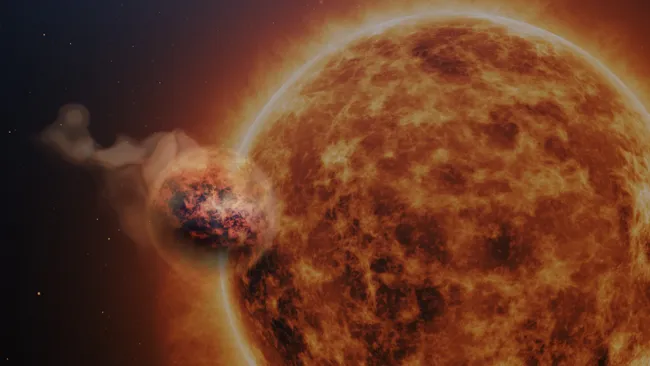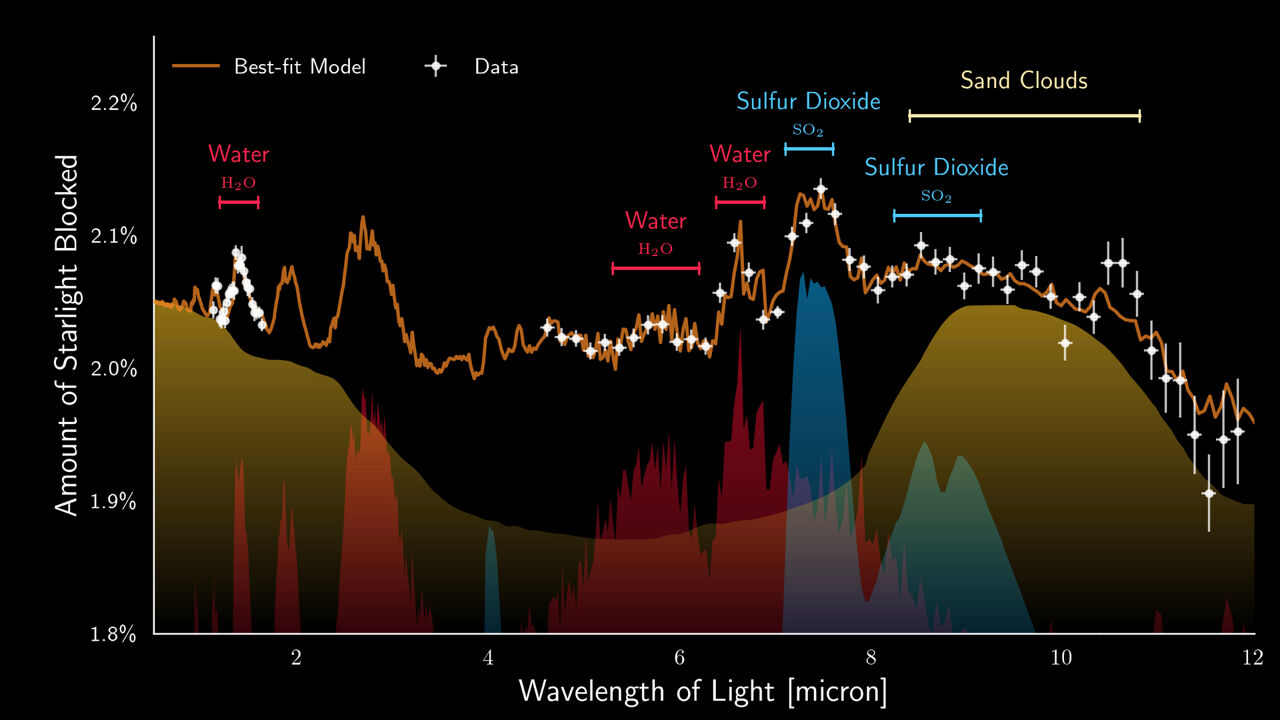
- Dit evenement is voorbij.
WASP-107b / SO2, silicate clouds, but no CH4 detected in a warm Neptune – publication

WASP-107b is a super-Neptune exoplanet that orbits the star WASP-107. It lies 200 light-years away from Earth in the constellation Virgo, its discovery was announced in 2017 by a team led by D. R. Anderson via the WASP-South.
WASP-107b could not have formed in its current orbit. It likely migrated inward from its birth orbit beyond 1 AU due to interaction with the heavier planet WASP-107c. WASP-107b is in a retrograde orbit, strongly misaligned with the equatorial plane of the parent star. The misalignment angle is equal to 118°+38 −19. WASP-107c follows a highly eccentric and inclined orbit with a period of 1088+15 −16 days. WASP-107b is a super-Neptune ice giant exoplanet located 200 light years away from Earth in the constellation Virgo. It is roughly the size of Jupiter but less than one-tenth of Jupiter’s mass, making it one of the lowest density exoplanets. Its radius is 0.96±0.03 times Jupiter’s, making its atmosphere fluffy, and coupled with transiting a moderately bright K-type star, makes it a target for atmospheric characterization. It is eight times nearer to its star than Mercury is to the Sun and orbits its star every 5.7 days. With a temperature of 773K / 500 °C, its atmosphere makes it one of the hottest known exoplanets. Helium was discovered in the planet’s atmosphere in 2018, making it the first time helium was discovered on an exoplanet. A follow-up observation with Keck in 2020 showed that the helium absorption extends beyond transit-egress. Extreme ultraviolet radiation from the host star is gradually whittling down the planet’s atmosphere, forming a comet-like tail 7 times as long as the radius of the planet.

While the James Webb Space Telescope (JWST or Webb) may spend a lot of its time observing the farthest reaches of the early universe when galaxies were only just starting to form, it also spends plenty of its time focused on objects a lot closer to home — such as the atmospheres of exoplanets in our galactic neighborhood. A team of European astronomers, co-led by researchers from the KU Leuven Institute of Astronomy, used observations from the JWST to detail the atmospheric composition of the exoplanet WASP-107b. The researchers found water vapor, sulfur dioxide and even silicate sand clouds residing within the exoplanet’s dynamic atmosphere. The study ‘SO2, silicate clouds, but no CH4 detected in a warm Neptune‘ may also have implications for our understanding of the chemistry of distant planets.
Links:
James Webb Space Telescope reveals sandy surprise in distant planet
Alien Atmosphere: Webb Detects Water Vapor, Sulfur Dioxide and Sand Clouds in Nearby Exoplanet


